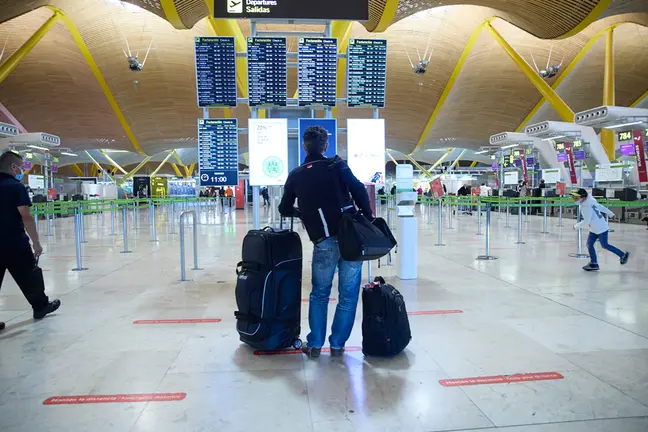More research is needed to find out whether the novel coronavirus originated in bats in China or in another country, an expert group led by the World Health Organization (WHO) said on Tuesday at the end of a month-long investigation in China.
The most likely hypothesis that has emerged is that the virus came from an animal species, moved to a second intermediary species and jumped to humans, WHO animal disease expert Peter Ben Embarek told a press conference in Wuhan, where the Covid-19 disease was first detected in December 2019.
Scientists from China, 10 other countries and UN organizations spent the past weeks examining markets, health facilities and laboratories in and around the city of Wuhan to find the source of the pandemic.
Although they did not reach definite conclusions, they have all but ruled out the possibility that the virus escaped from a Chinese laboratory.
Embarek said that the "laboratory incident hypothesis is extremely unlikely to explain the introduction of the virus into the population," given no laboratory in the area had been working with such a virus.
The novel coronavirus, scientifically known as Sars-CoV-2, is most closely related to viruses found in bats and in pangolins.
"However, the viruses identified so far from neither of these species are sufficiently similar to Sars-CoV-2" to determine the winged creatures as the source and the scaled mammals as intermediary hosts, said Chinese investigation team leader Liang Wannian.
Other countries in Asia
Embarek stressed that further investigations should not only focus on China but on other countries in Asia and beyond.
More work is needed to sample bats and other possible host species abroad, he said.
US State Department spokesperson Ned Price said that the "jury is still out" on whether China has provided enough transparency regarding the novel coronavirus.
"Broadly speaking we have expressed our concerns regarding the need for full transparency and access from China and the WHO to all information regarding the earliest days of the pandemic," Price added.
The US under former president Donald Trump pushed the theory that the virus originated in a Wuhan lab, while the administration of President Joe Biden has called for more evidence before concluding an origin of the virus.
Embarek also pointed out that the virus may have been introduced to Wuhan by travellers or through frozen wild animal products from other Chinese regions or countries.
Liang highlighted some studies suggesting that the virus was already present abroad in late 2019, in line with theories of a foreign virus origin that have been propagated by Beijing.
The foreign investigation team members did not confirm such theories, but they said that more data from early cases outside China are needed to map the path that the virus took.
While it is clear that the virus can survive on frozen products, there is no proof yet that anyone has been infected in this way, Embarek pointed out.
Huanan market
The WHO-led mission in China focused on Wuhan's Huanan market where the first cluster of Covid-19 infections appeared in late 2019.
The market sells seafood and farmed wild animals, raising the question whether some of the animals carried the virus.
None of the animal samples from the market have tested positive, Dutch virologist Marion Koopmans told the press conference.
However, some of the species, including rabbits, are known to be susceptible to the virus. There are suspicions that ferret-badgers and bamboo rats that were on offer at Huanan market are also able to catch the virus, according to Koopmans.
Some of these animals have been traced back to regions with bat populations, she said, stressing that further investigations on this issue are needed.
The market was not the only place in Wuhan where people started falling ill with Covid-19 in December 2019, according to the WHO team members. However, they did not find evidence of earlier cases in hospital and pharmacy records.











